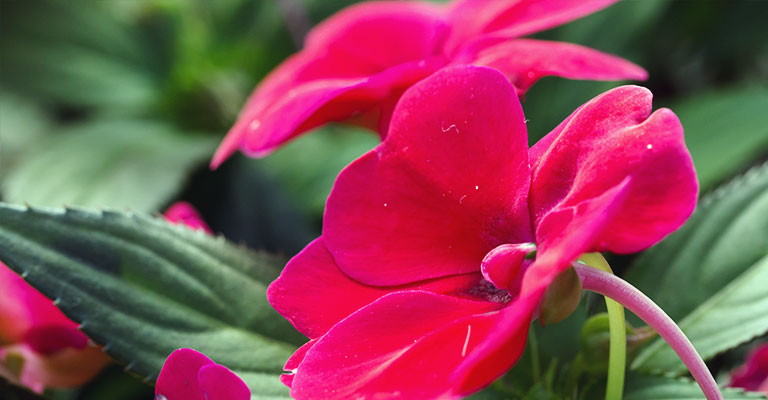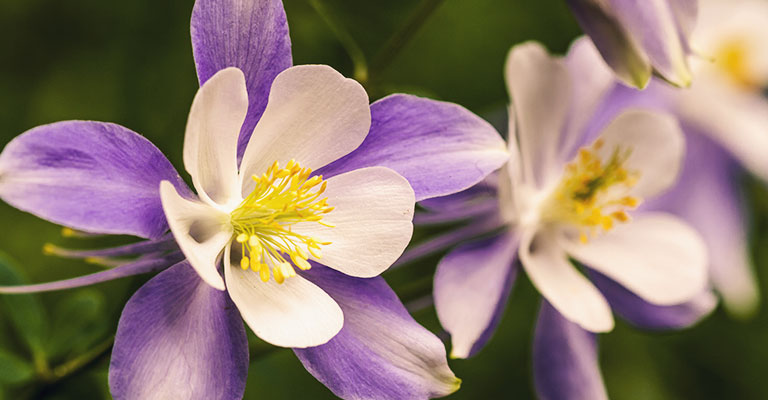Beginners Guide to Shade Gardening

"New Guinea Impatiens are perfect for your shade garden."
There’s no doubt that most plants love light, but planning a shade garden requires a little more creativity. If you have your heart set on big, happy sunflowers and perky little marigolds, you may experience a pang of disappointment.
Sometimes looking at things differently can open up new worlds of possibilities, and that shady spot presents nearly unlimited potential that you may not have considered. By its very nature, a shade garden is cool, peaceful, and inviting. Think about serene, peaceful woodland gardens, beautiful all year round.
Which shade plant to choose?
If you’re still feeling a little sad about those sun-loving flowers, keep in mind that you now have an opportunity to select from a variety of beautiful, shade-loving plants. Most don’t get the credit they deserve (After all, anybody can grow a sunflower!). Here are some great shade plant choices to consider.
Annuals for Partial to Deep Shade
- Fuchsia (Fuchsia magellanica) – Partial to deep shade
- Polka dot plant (Hypoestes phyllostachya) – Partial shade
- New Guinea impatiens (Impatiens hawkeri) – Partial to deep shade
- Impatiens walleriana – Partial to deep shade
- Swedish ivy (Plectranthus) – Partial shade
- Coleus (Solenostemon scutellarioides) – Partial to deep shade
- Wishbone flower (Torenia fournieri) – Partial to deep shade
- Calico plant (Alternanthera ficoidea) – Partial shade
- Bloodleaf (Iresine herbstii) – Partial to deep shade
- Wax begonia (Begonia x semperflorens) – Partial to deep shade
- Tuberous begonia (Begonia tuberhybrida) – Partial shade
- Caladium (Caladium bicolor) – Partial to deep shade
- Browallia (Browallia speciosa) – Partial shade
Partial = 4 to 6 hours of direct light while
Deep shade = Less than 4 hours of direct light

"Columbine flowers are perfect for your shade garden."
Perennials for Partial to Deep Shade
- Trillium (Trillium) – Partial shade
- Lily of the valley (Convallaria majalis) – Partial shade
- Hydrangea (Hydrangea macrophylla) – Afternoon shade
- Fern leaf bleeding heart (Dicentra eximia) – Partial shade
- Foam flower (Tiarella cordifolia) – Partial to deep shade
- Lenten rose (Helleborus orientalis) – Partial shade
- Columbine (Aquilegia) – Partial to deep shade
- Siberian Forget-Me-Not (Brunnera macrophylla) – Partial to deep shade
- Japanese painted fern (Athyrium niponicum) – Partial to deep shade
- Coral bells (Heuchera) – Partial shade
- Lungwort (Pulmonaria) – Partial shade
- Toad lily (Tricyrtis hirta) – Partial to deep shade
- False spirea (Astilbe) – Partial to deep shade
- Primrose (Primula) – Partial shade
- Lady’s Mantle (Alchemilla) – Partial shade
- Bear’s breeches (Acanthus spinosus) – Afternoon shade
- Saxiferaga (Bergania cordifolia) – Partial shade
Partial = 4 to 6 hours of direct light while
Deep shade = Less than 4 hours of direct light

